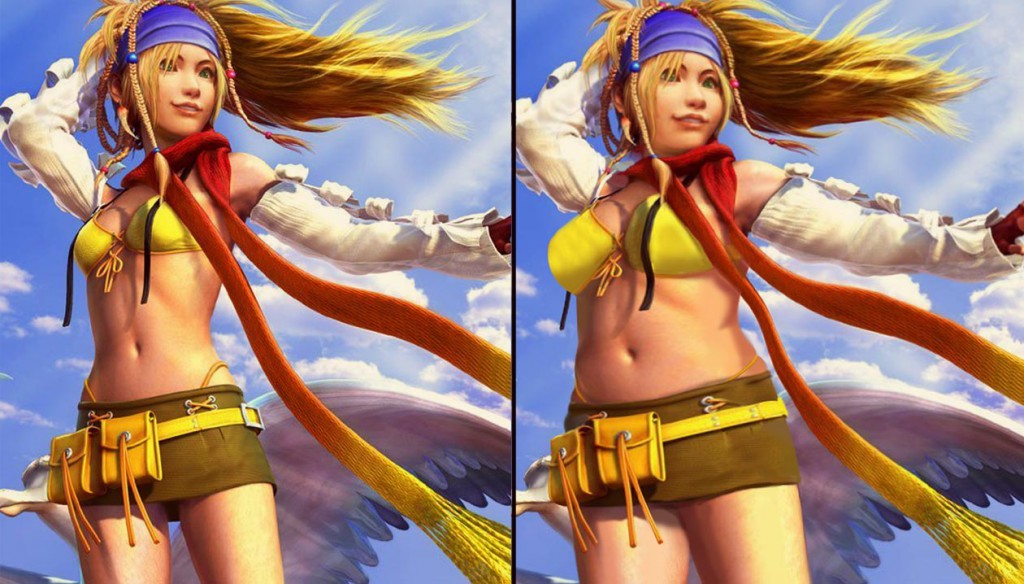
Is It Bad Being Skinny?
There’s this movement going on where people are trying to make it more socially acceptable to have a higher body fat percentage, proportionally thicker bones, shorter limbs and a larger waist. The photo above is a good example, where bulimia.com has taken 10 female video-game characters and transformed their physiques into what they feel better represents the average woman. These “realistic” makeovers have been shared to millions of people via BuzzFeed and HuffPo, among others.
Some people argue that these aren’t supposed to be average women. They’re supposed to be legendary action heroes. Due to their world-class genetics and lifestyle focused on training, you could argue that their having a lower body fat percentage is more realistic.
That makes sense, but that’s not my issue with these makeovers. I don’t think the person doing the makeover was concerned about what made sense for the fictional character but rather what would have the best impact on the self-esteem of her fans. That intention seems good, and if this can help people with bulimia feel better about their bodies, then this is great.
My issue is that this backlash against the thin ideal is making it seem like it’s wrong to be thin.
Thin People Are People, First And Foremost
For people who aren’t naturally thin, they might not get it. I was listening to This American Life today and their most recent episode, Tell Me I’m Fat, had a few stories in it about the lives of people who are fat (fat being their preferred term).
The second story was about a woman who noticed that people treated her a lot better after she lost weight. She said it was like that Eddie Murphy movie where he dresses up as a white person, and everyone treats him better. (I haven’t seen it.) She lost weight, and all of a sudden, she got the respect that she deserved all along.
It reminded me of my own experience. When I was 130 pounds, my friends would playfully push me around, bros would occasionally shout insults at me as they drove by in their cars (“get a haircut, faggot!”), people would tell me I should “just eat more,” and sometimes I’d get asked if I was sick.
When I got my weight up to 180 pounds everything changed. All of a sudden, I wasn’t an incredibly skinny person. I was just a person.
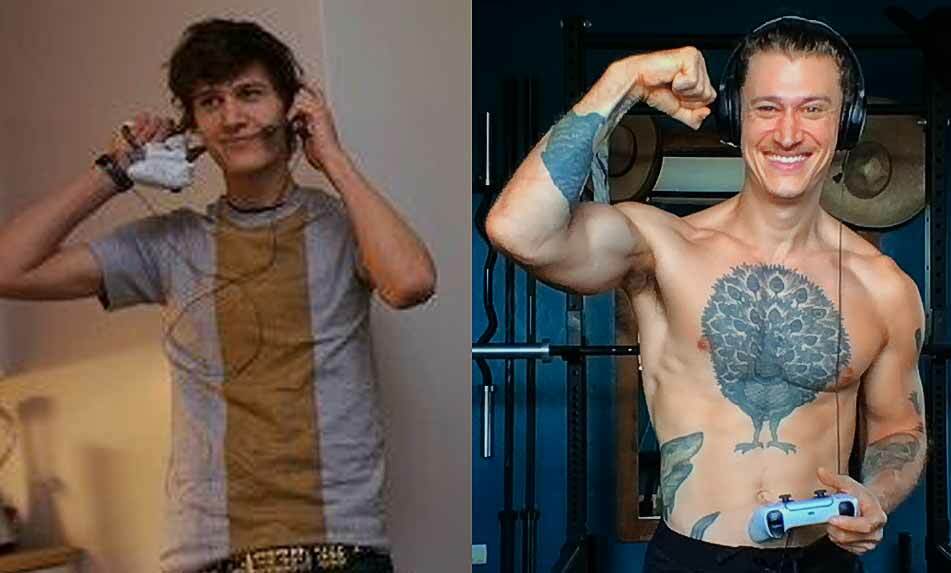
In the Bony to Bombshell community, this is the number one complaint that members come in with—being criticized by friends, family and loved ones for being born as someone with thinner bones, a higher metabolism, a smaller stomach, smaller muscles, a lower appetite, and a more slender bone structure.
Body Acceptance & Wearing The Shoe On The Other Foot
I worry that this body-acceptance movement will make it worse for the small minority of people who struggle with being considered too thin. I mean, being underweight and being overweight are both caused by a combination of genetic and lifestyle factors. Some of those factors are within our control, some are not.
We get frustrated by the “just eat more” or “eat a burger” comments from people who don’t understand us. We worry about losing weight when we’re stressed. We worry about postural imperfections because our body shape is entirely defined by our bone structure. And we want to be stronger, sexier and more resilient. We want people to look at us and see a healthy, capable person.
The naturally thicker, chubbier endomorphs (or apples) might struggle to eat less and exercise more, but we have the flip side of those same struggles. It can take a lot of heavy lifting to build muscle, and it can take a lot of intense eating to get our bodyweight into a nice, healthy range. As hedonistic as that might sound to someone who loves to eat too much, for us that’s really damn hard!
But even just saying that will often get us sneers or, “I wish I had your ‘problem.'”
Gah.
And photoshopping away thin women is not helping. It’s wrong to Photoshop someone in a magazine to make them thinner. Shouldn’t it be wrong to Photoshop a thin person to make them thicker?
I know these aren’t real people, just video game characters. Still, it sends a weird message.
There is nothing wrong with making new video game characters who are endomorphs. In fact, there should probably be more of them—way more of them. There’s something refreshing about Blizzard’s new character Zarya (left), the mesomorphic Russian strongwoman-turned-superhero. Yes, it might take heavy steroid abuse or a genetic mutation to make that physique realistic, but she’s a cartoon superhero—she doesn’t need to be realistic. There are two kids right now with a genetic mutation allowing them to build steroid-like amounts of muscle naturally. Maybe she is like them.
Their parka-wearing endomorph Mei character (right) is awesome too.
Their non-skimpy outfits are perhaps the most awesome thing of all.
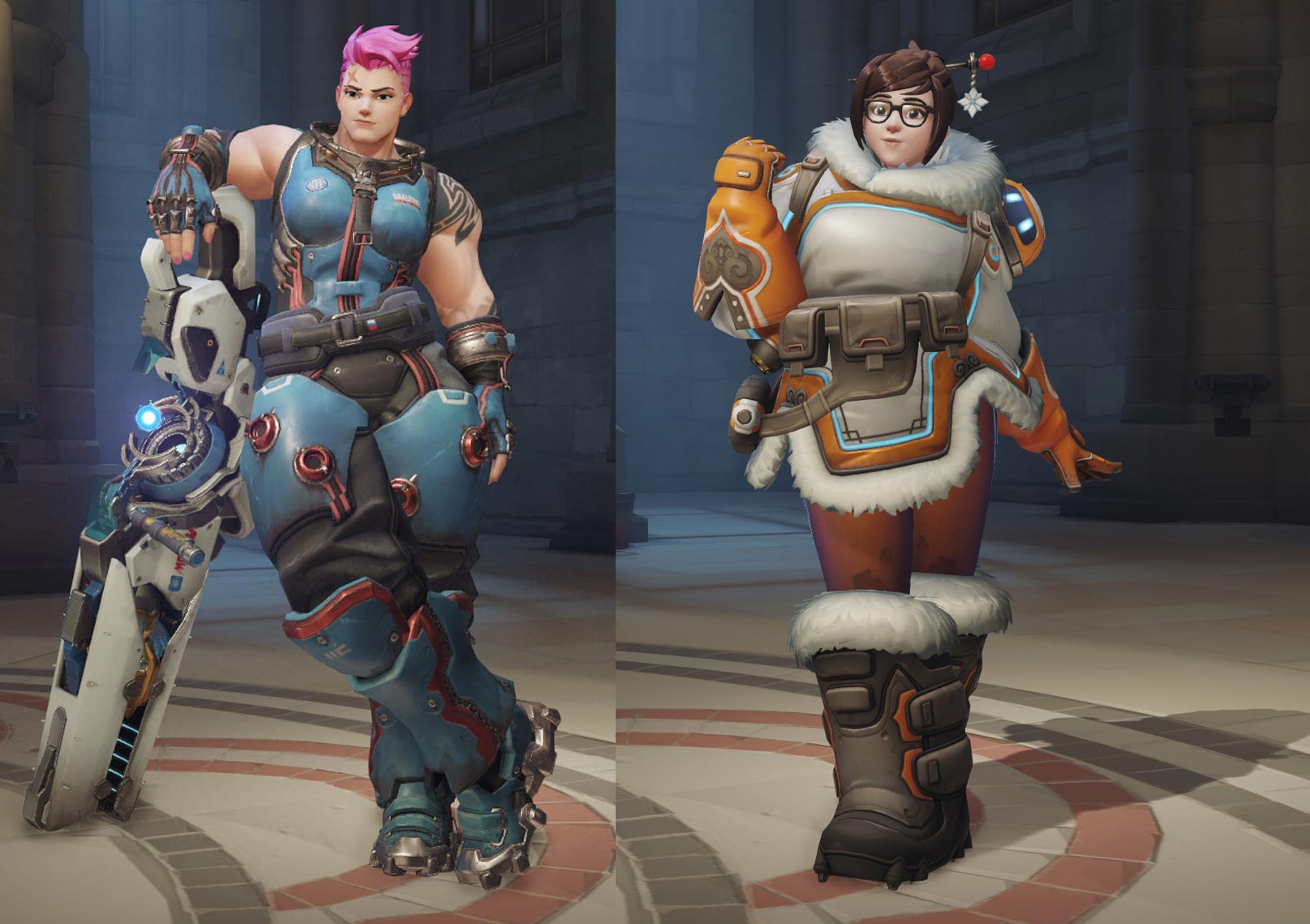
As body image issues continue to be raised, and as more women get into game design, we may see more female characters coming out who look less like the fantasy of a male computer programmer (like the old Lara Croft). And if more women get into playing these video games, as I’m sure is Blizzard’s hope, then other companies will start trying to design characters that are more marketable to women. This is good.
However, part of promoting body acceptance is promoting the acceptance of all body types, not just the most common one. We’re all in this together, after all.
Having an ectomorph female character in a video game isn’t any kind of moral failing on the part of the game designer. The body on the right is totally cool, but Tifa Lockhart shouldn’t need to have her body digitally edited in order to be considered socially acceptable.
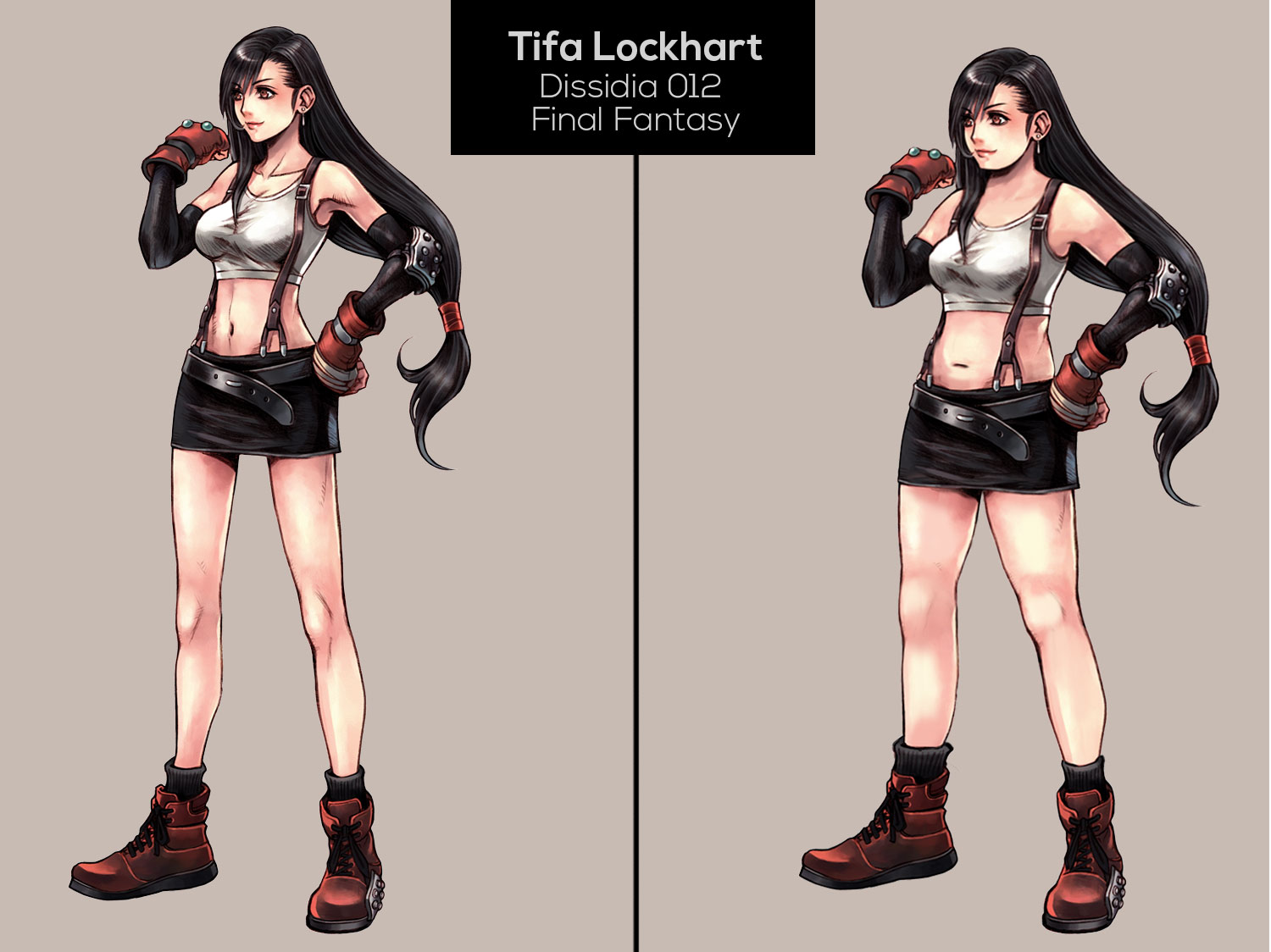
My worry is that by taking these ectomorph characters and turning them into endomorphs, it’s making it seem like thin people “should” be bigger. I don’t think that’s the intention of the Photoshop wizards over at Bulima.com, but we’re already so tired of people moralizing our thinness.
Thin-Shaming Is Wrong
As Forbes so eloquently put it in their article about these makeovers, “If fat-shaming is wrong (and it is) then thin-shaming is, too.”
I’m not trying to say that we should leave the status quo alone. I know that most fashion models do not represent a healthy ideal even for us ectomorphs. Just like someone who is naturally chubby probably shouldn’t be taking weight gain pills and force feeding themselves rice, we probably shouldn’t be taking appetite suppressing drugs and trying to eat as little as possible.
This is because being elite is very different from being healthy. Someone who is naturally extremely hefty might make a fantastic powerlifter, shot-putter or sumo wrestler, but it would be better for their longevity if they put some emphasis on staying reasonably lean and improving their cardiovascular health.
Same thing on the flip side. Someone who is naturally extremely skinny could run with their strengths and become an amazing marathon runner. However, for optimal health and attractiveness, it would be better to focus on their weaknesses. They might do better with more of a sumo wrestler lifestyle, where they lift heavy things and eat a lot of whole food.
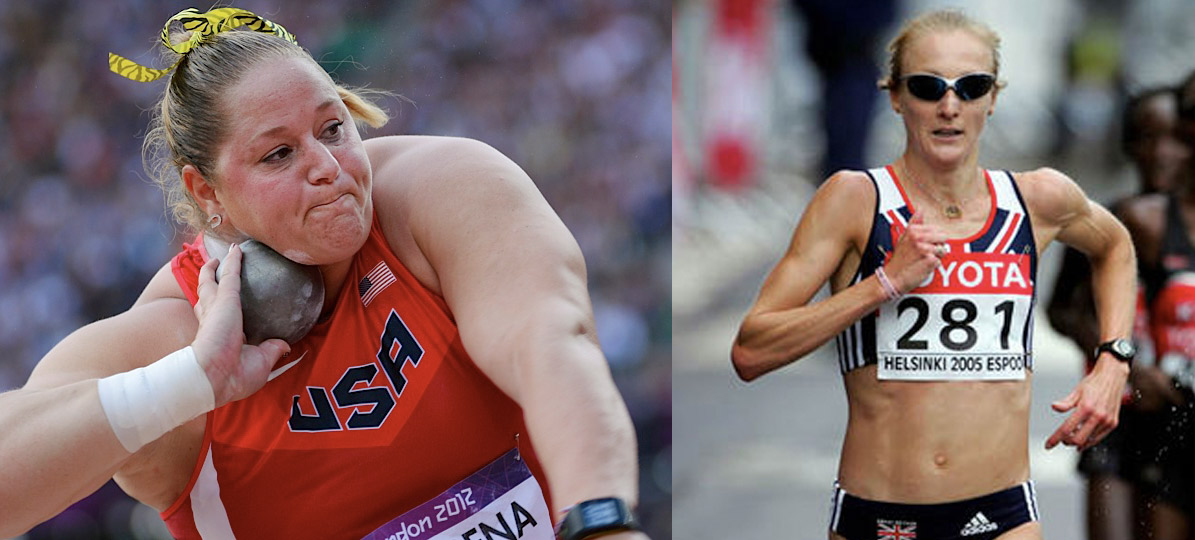
As a rule of thumb, we should emphasize our strengths when trying to break world records, but we should bring up our weaknesses when it comes to health and attractiveness.
So I understand that aspiring to look like a fashion model is unrealistic for naturally chubbier people and that it’s realistic yet unhealthy for naturally skinny people. That doesn’t necessarily mean that it’s wrong to be a fashion model or wrong for the fashion industry to prefer that extreme look, just like it’s not wrong to have a ton of respect for marathon runners or sumo wrestlers.
Or maybe it is wrong for the artistic idealists running the fashion industry to, for the sake of art, put forth a body type that they realize might have a negative impact on the self-esteem of people who are into fashion.
Exaggerated Features
For example, both of these people are making great health and lifestyle sacrifices in order to portray the extreme, exaggerated image that they’re trying to portray. Both are very successful because of it.
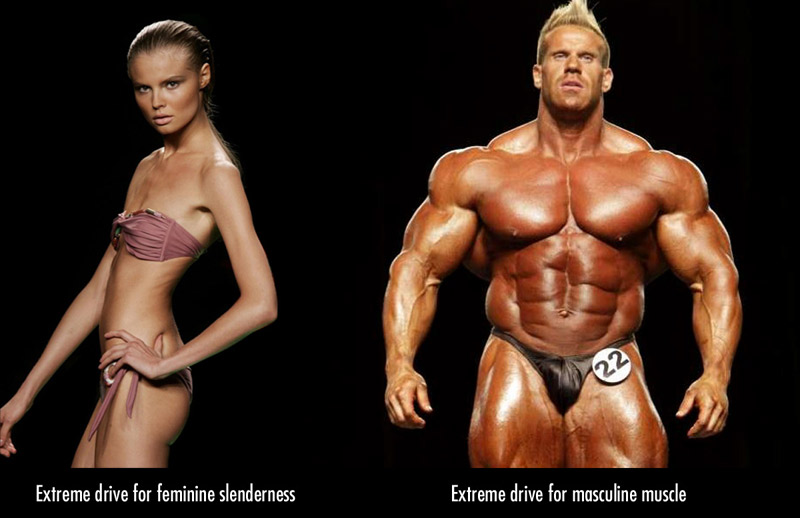
I remember my mum telling my naturally skinny teenage sister that she would make a great fashion model. My mum was thinking that it would be a good job to have while she got her degree. My sister decided that she wanted to be a boat captain instead (and she just finished her neuroscience degree), but that kind of comment seemed well-intentioned. Sort of like saying, “Hey, you have this really cool, rare genetic advantage!” I don’t think looking like a potential fashion model was this negative self esteem thing for her or anything, and my mum certainly didn’t see it as any kind of negative thing.
But now? Now there’s this stigma forming against skinny body types. What if my mum had been insisting that my sister eat more, gain weight, look more “normal”, look more “realistic”? (She was telling me all of that stuff, and I sure didn’t like it.)

So my problem with these makeovers is that they’re taking perfectly healthy (albeit skimpily clad) looking cartoons of ectomorphs and making them into endomorphs.
In this latest Rise of the Tomb Raider Lara Croft looks like a fit ectomorph, not so unlike ol’ Indiana Jones. This is not that unrealistic of a body type for someone with a thin bone structure who is very active and eats a lot of good food—especially if they lift weights. They gave the old Lara Croft an endo-makeover, but hopefully, this new one doesn’t need one.

I’ve been playing the game with my w,ife and we’ve been liking it. She has naturally thin bones, well-used muscles, tan skin and dark brown hair. When she’s running around in the game it looks like she’s controlling a cartoon version of herself.
She shouldn’t need to gain 30 pounds in order to be considered socially acceptable, neither should my sister, and neither should you.
Acceptance Of All Body Types
This is all to say that we’re about body acceptance too. However, we’re not just about accepting the “realistic” body types, we’re about accepting all of them. We’re also about taking what we have and making the best of it, and fortunately, some of these pre-makeover women have some pretty inspiring ecto-physiques.
For example, this new Lara Croft represents a physique that almost every reader of this blog can achieve while improving their health and posture in the process. It doesn’t even need to take that long.
For example, here’s one of our Bombshell members, Sara:
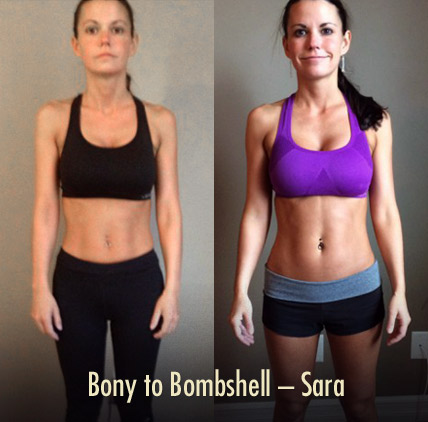
Most of us around here want to make the most of our bodies, and that’s amazing. But we can make the most of our bodies from a place of confidence, not from a place of shame.
There are some pretty cool, thin role models out there for us. They don’t need to be thickened.
If you want thicker video game characters, make thicker video game characters in the future. Blizzard’s new game has tons of body shapes, and some of them are even fully clothed. Awesome, this is an incredible step in the right direction. But don’t go around photoshopping thin people. We might take that the wrong way, giving other people the wrong idea.
Shane Duquette is the co-founder of Outlift, Bony to Beastly, and Bony to Bombshell, and has a degree in design from York University in Toronto, Canada. He's a certified conditioning coach with over fifteen years of experience helping over 15,000 men and women get stronger, leaner, fitter, and healthier.

